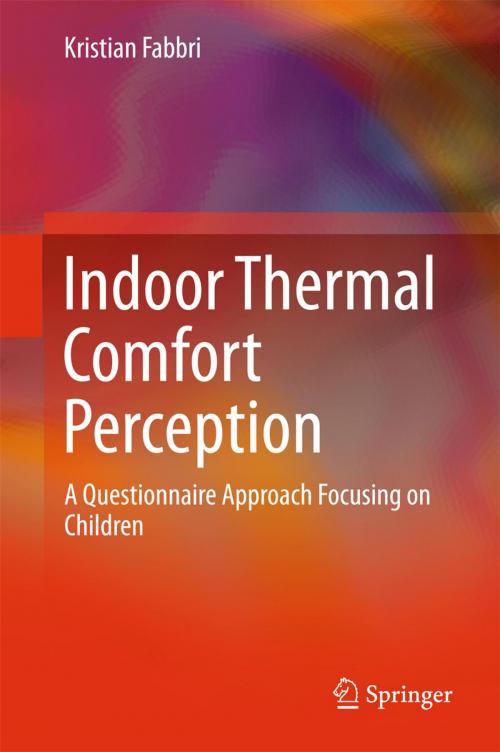Indoor Thermal Comfort Perception
A Questionnaire Approach Focusing on Children
Nonfiction, Science & Nature, Technology, Engineering, Civil, Business & Finance, Industries & Professions, Industries| Author: | Kristian Fabbri | ISBN: | 9783319186511 |
| Publisher: | Springer International Publishing | Publication: | June 30, 2015 |
| Imprint: | Springer | Language: | English |
| Author: | Kristian Fabbri |
| ISBN: | 9783319186511 |
| Publisher: | Springer International Publishing |
| Publication: | June 30, 2015 |
| Imprint: | Springer |
| Language: | English |
Providing a methodology for evaluating indoor thermal comfort with a focus on children, this book presents an in-depth examination of children’s perceptions of comfort. Divided into two sections, it first presents a history of thermal comfort, the human body and environmental parameters, common thermal comfort indexes, and guidelines for creating questionnaires to assess children’s perceptions of indoor thermal comfort. It then describes their understanding of the concepts of comfort and energy, and the factors that influence that perception. In this context, it takes into account the psychological and pedagogical aspects of thermal comfort judgment, as well as architectural and environmental characteristics and equips readers with the knowledge needed to effectively investigate children’s perspectives on environmental ergonomics.
The research field of indoor thermal comfort adopts, on the one hand, physical parameter measurements and comfort indexes (e.g. Predicted Mean Vote (PMV) or adaptive comfort), and on the other, an ergonomic assessment in the form of questionnaires. However the latter can offer only limited insights into the issue of comfort, as children often use different terms than adults to convey their experience of thermal comfort. The books aims to address this lack of understanding with regard to children’s perceptions of indoor thermal comfort.
The book is intended for HVAC engineers and researchers, architects and researchers interested in thermal comfort and the built environment. It also provides a useful resource for environmental psychologists, medical and cognitive researchers.
Providing a methodology for evaluating indoor thermal comfort with a focus on children, this book presents an in-depth examination of children’s perceptions of comfort. Divided into two sections, it first presents a history of thermal comfort, the human body and environmental parameters, common thermal comfort indexes, and guidelines for creating questionnaires to assess children’s perceptions of indoor thermal comfort. It then describes their understanding of the concepts of comfort and energy, and the factors that influence that perception. In this context, it takes into account the psychological and pedagogical aspects of thermal comfort judgment, as well as architectural and environmental characteristics and equips readers with the knowledge needed to effectively investigate children’s perspectives on environmental ergonomics.
The research field of indoor thermal comfort adopts, on the one hand, physical parameter measurements and comfort indexes (e.g. Predicted Mean Vote (PMV) or adaptive comfort), and on the other, an ergonomic assessment in the form of questionnaires. However the latter can offer only limited insights into the issue of comfort, as children often use different terms than adults to convey their experience of thermal comfort. The books aims to address this lack of understanding with regard to children’s perceptions of indoor thermal comfort.
The book is intended for HVAC engineers and researchers, architects and researchers interested in thermal comfort and the built environment. It also provides a useful resource for environmental psychologists, medical and cognitive researchers.















